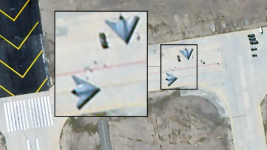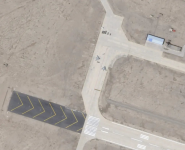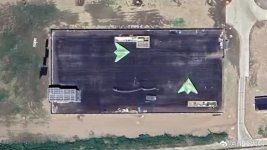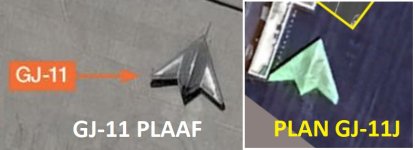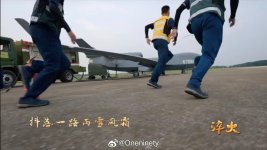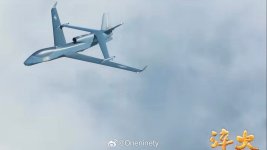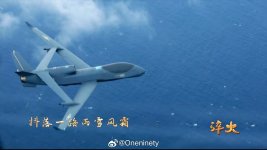China beat the replicator by miles. While replicators still vaporware China has 200 miles, cheap, accurate, loitering munition
Researchers from arms maker say the drone is comparable to the US Switchblade 600, but it may prove cheaper and more efficient.

www.scmp.com
China’s largest weapon manufacturer has unveiled a small but ultra-long-range “kamikaze” drone that could significantly outperform its main American competitor, according to its performance data.
The electric-powered drone, developed by
China North Industries Group Corporation Limited (Norinco), can cruise at a speed of 144km/h (90 miles per hour) for up to 105 minutes, giving it a range of 200km (124 miles).
It can also hover for some time before homing in on a selected target, according to drone specifications published in a peer-reviewed paper in the Journal of Nanjing University of Aeronautics and Astronautics last month.
Its main competitor is the
US-made Switchblade 600, which has a cruising speed of around 110km/h, a flight time of 40 minutes and a typical combat range of about 40km.
“Loitering munitions … such as the US Switchblade series combine the characteristics of drones and missiles with advantages such as long flight time, wide range of action, flexible use, and diverse penetration styles,” the research team from Norinco’s Xian Modern Control Technology Research Institute wrote.
Both models use a folding two-blade propeller, with the Chinese team saying they had solved some of the inefficiencies this design created and “effectively extended their flight time”.
They also said these small loitering munitions “could be produced at low cost” – potentially giving China an advantage in any drone arms race compared.
The team did not specifically refer to the US military’s drone programmes or Taiwan, but the model’s range is enough to cross the 180km Taiwan Strait, and this could prove a serious threat to the Pentagon’s “Replicator” programme.
The Norinco research team, led by Li Haicheng, said kamikaze drones had some distinct flight characteristics that required dedicated ground testing facilities.
The design of the new drone was conducted on China’s own aerodynamic software platform that carries out numerical simulations.
The team also employed artificial intelligence techniques to solve some complex problems that traditional methods struggled with.
Initially, the drone could only stay in the air for 78 minutes, falling short of the military’s expectations, but after AI optimisation, its cruise time increased by more than a third, the paper said.
The research and development process for the new drone was aided by Northwestern Polytechnical University, which is also based in Xian. Last year, Beijing accused the US government of launching a complex cyberattack on the university’s network to access its research.
The actual performance of Chinese drones has been in doubt because the PLA has not fought a battle for decades.
But the war in Ukraine is changing that. Both sides are known to have used Chinese drones – as well as drones from multiple other sources.
However, apart from being more expensive, US drones have faced questions about their performance. The Wall Street Journal reported that Ukrainian forces had found them “glitchy and expensive”, prompting an increased use of Chinese-made drones instead.
The Chinese government has started restricting exports of drones and their components to curb their military use as the conflict drags on.



